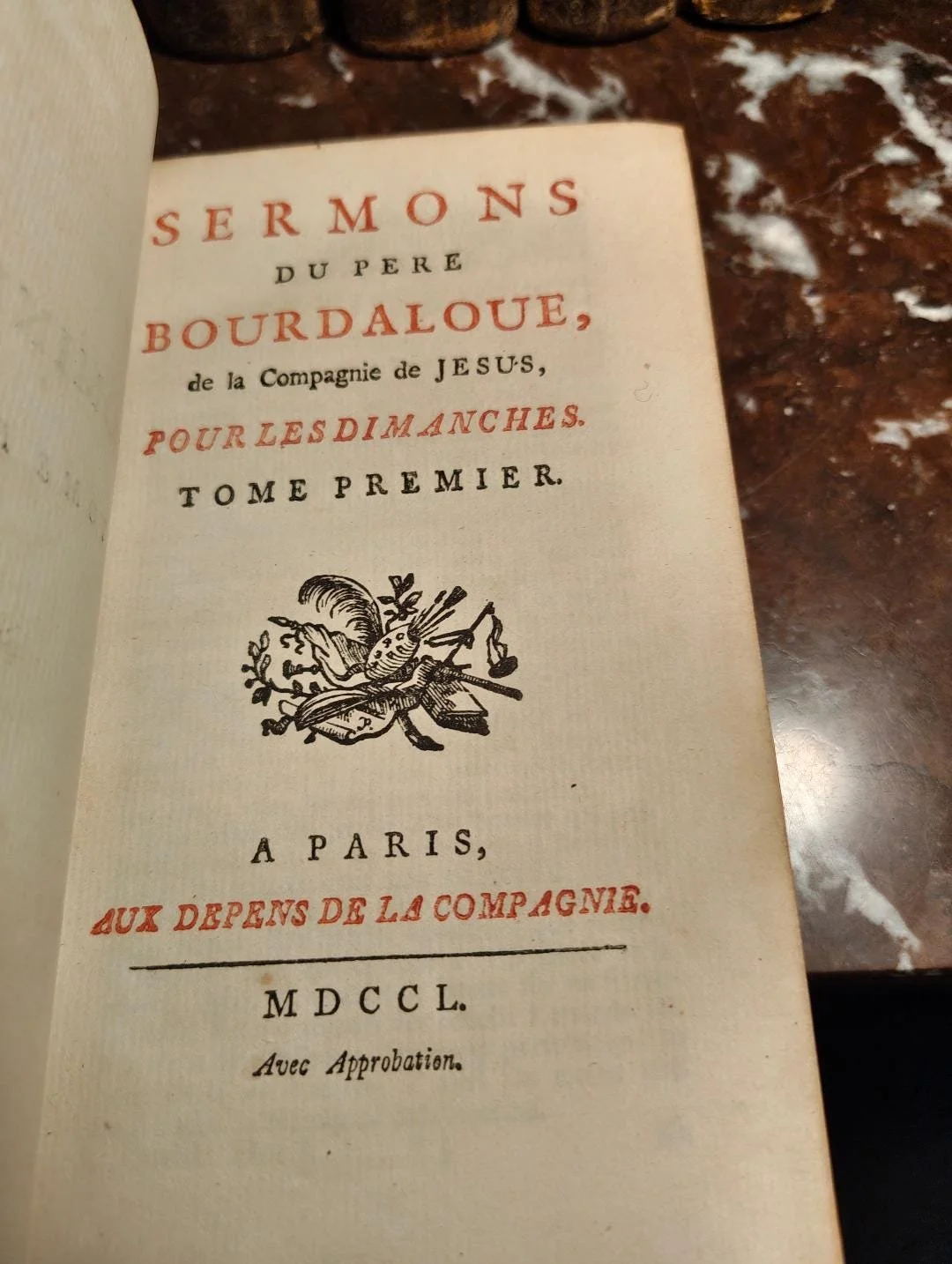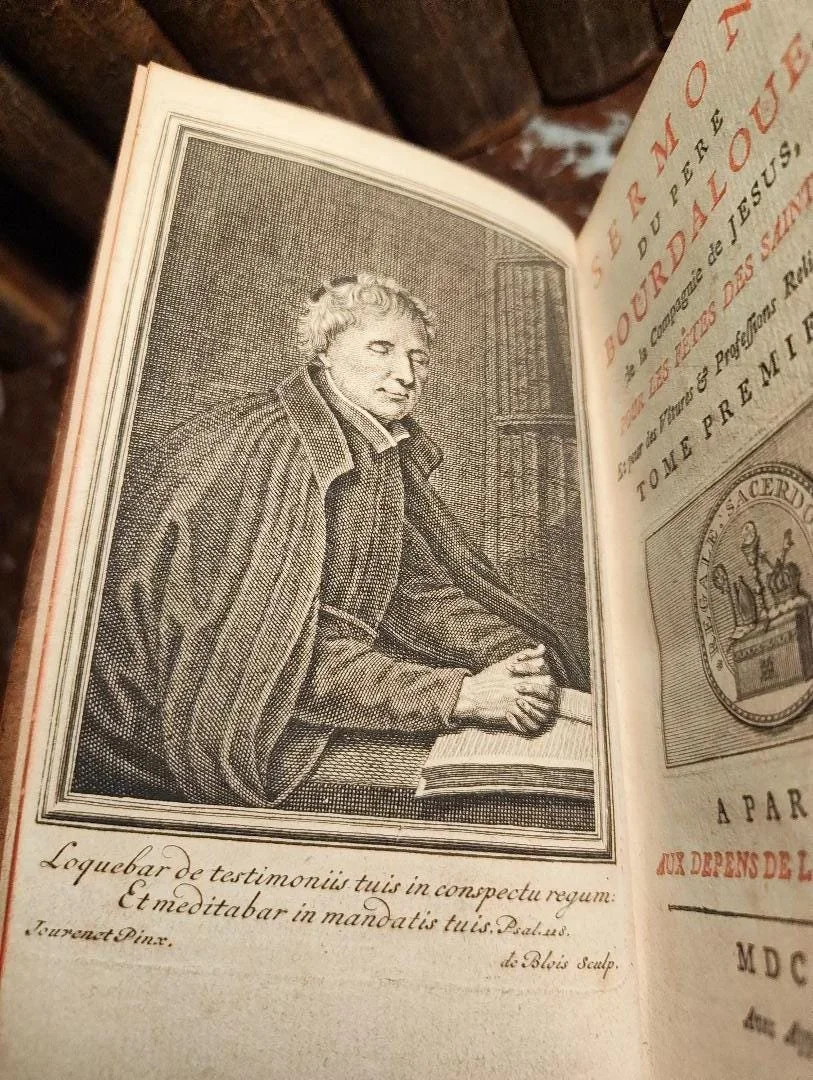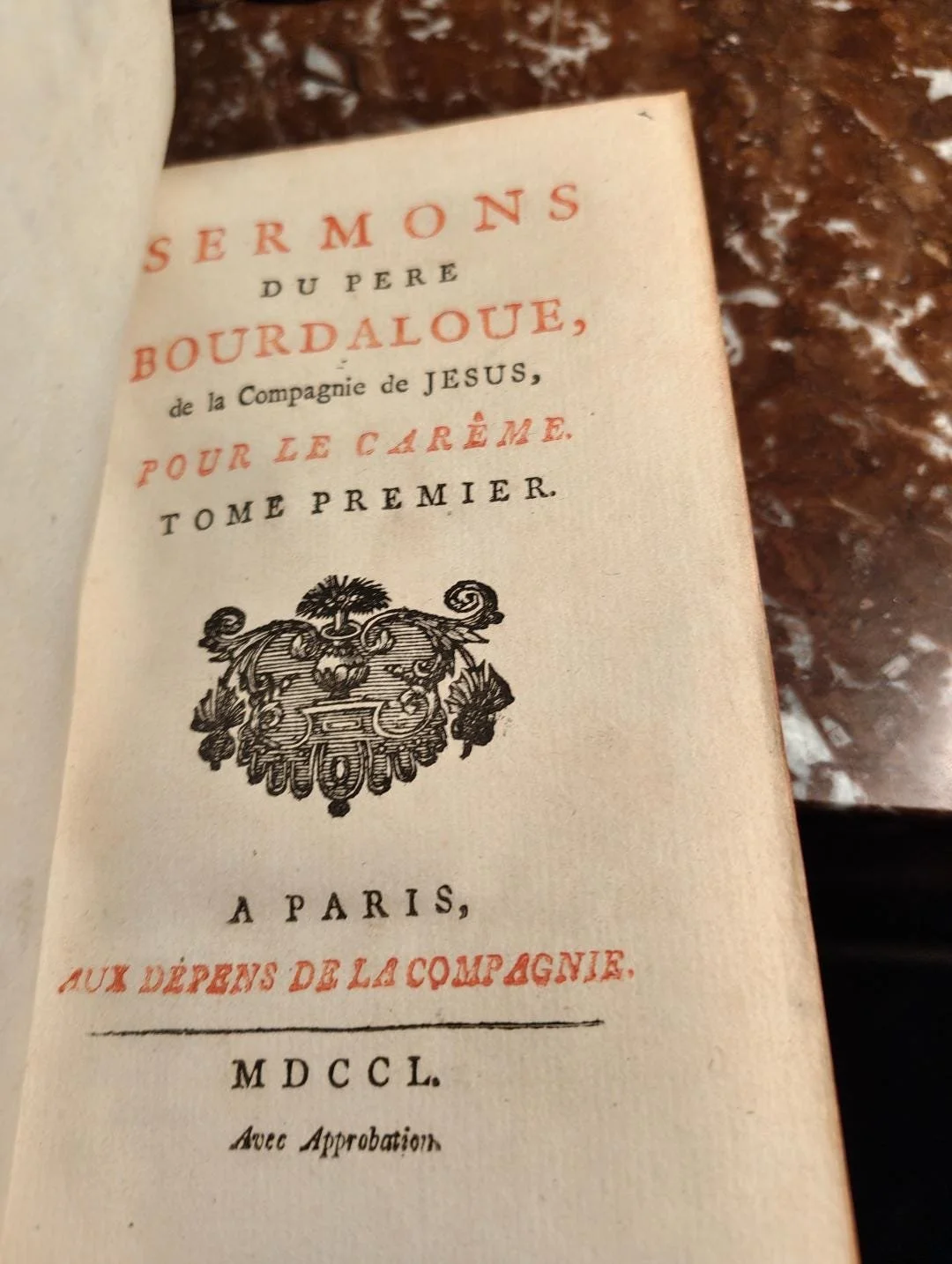 Image 1 of 10
Image 1 of 10

 Image 2 of 10
Image 2 of 10

 Image 3 of 10
Image 3 of 10

 Image 4 of 10
Image 4 of 10

 Image 5 of 10
Image 5 of 10

 Image 6 of 10
Image 6 of 10

 Image 7 of 10
Image 7 of 10

 Image 8 of 10
Image 8 of 10

 Image 9 of 10
Image 9 of 10

 Image 10 of 10
Image 10 of 10











Louis Bourdaloue. Sermons. Paris, 1750. Fourteen Volumes in Contemporary Calf
A monumental Jesuit production of mid eighteenth century France, complete in fourteen uniformly bound volumes
This 1750 Paris edition of the collected sermons of Père Louis Bourdaloue represents one of the most substantial ecclesiastical publications of the French eighteenth century. Issued aux dépens de la Compagnie, the set was financed and produced by the Society of Jesus itself, a testament to the esteem in which Bourdaloue was held within the order and at the courts of Louis XIV and Louis XV.
Bourdaloue, often described as the greatest preacher of the classical age, combined intellectual clarity with a polished style that reflected the ideals of French baroque oratory. His sermons were delivered before the most influential audiences of the realm and were admired for their balance between theological insight, moral instruction, and persuasive rhetoric. To read Bourdaloue is to encounter the spiritual and intellectual concerns of late seventeenth century France as refracted through one of its most disciplined and eloquent voices.
The fourteen volumes bring together the full breadth of his output. They include sermons for Sundays, the season of Lent, and the mysteries of the Church, alongside panegyrics, exhortations, and Christian instructions. The coherence of the set and the completeness of the contents make this example particularly valuable. Large Jesuit productions of this kind were expensive to print and were often dispersed across generations of clerical libraries. Survival of a full set in contemporary bindings is increasingly uncommon.
Each volume is bound in mottled calf with gilt tooling along the spines, red sprinkled edges, and red and black title pages. Several volumes retain engraved frontispieces that reflect the devotional aesthetics of the period. The bindings display sympathetic wear along the spines and corners while remaining handsome on the shelf. Internally the set is remarkably well preserved with crisp print, clean margins, and only occasional foxing.
The provenance note signed A. H. Pripp adds a northern European dimension to its history, showing how Jesuit works circulated far beyond their Parisian point of origin.
For collectors of eighteenth century French theology, Jesuit history, or imposing antique sets in original bindings, this is a distinguished and substantial acquisition. It stands as a testament to the intellectual ambition of the Society of Jesus and the enduring influence of one of its most celebrated orators.
A monumental Jesuit production of mid eighteenth century France, complete in fourteen uniformly bound volumes
This 1750 Paris edition of the collected sermons of Père Louis Bourdaloue represents one of the most substantial ecclesiastical publications of the French eighteenth century. Issued aux dépens de la Compagnie, the set was financed and produced by the Society of Jesus itself, a testament to the esteem in which Bourdaloue was held within the order and at the courts of Louis XIV and Louis XV.
Bourdaloue, often described as the greatest preacher of the classical age, combined intellectual clarity with a polished style that reflected the ideals of French baroque oratory. His sermons were delivered before the most influential audiences of the realm and were admired for their balance between theological insight, moral instruction, and persuasive rhetoric. To read Bourdaloue is to encounter the spiritual and intellectual concerns of late seventeenth century France as refracted through one of its most disciplined and eloquent voices.
The fourteen volumes bring together the full breadth of his output. They include sermons for Sundays, the season of Lent, and the mysteries of the Church, alongside panegyrics, exhortations, and Christian instructions. The coherence of the set and the completeness of the contents make this example particularly valuable. Large Jesuit productions of this kind were expensive to print and were often dispersed across generations of clerical libraries. Survival of a full set in contemporary bindings is increasingly uncommon.
Each volume is bound in mottled calf with gilt tooling along the spines, red sprinkled edges, and red and black title pages. Several volumes retain engraved frontispieces that reflect the devotional aesthetics of the period. The bindings display sympathetic wear along the spines and corners while remaining handsome on the shelf. Internally the set is remarkably well preserved with crisp print, clean margins, and only occasional foxing.
The provenance note signed A. H. Pripp adds a northern European dimension to its history, showing how Jesuit works circulated far beyond their Parisian point of origin.
For collectors of eighteenth century French theology, Jesuit history, or imposing antique sets in original bindings, this is a distinguished and substantial acquisition. It stands as a testament to the intellectual ambition of the Society of Jesus and the enduring influence of one of its most celebrated orators.

